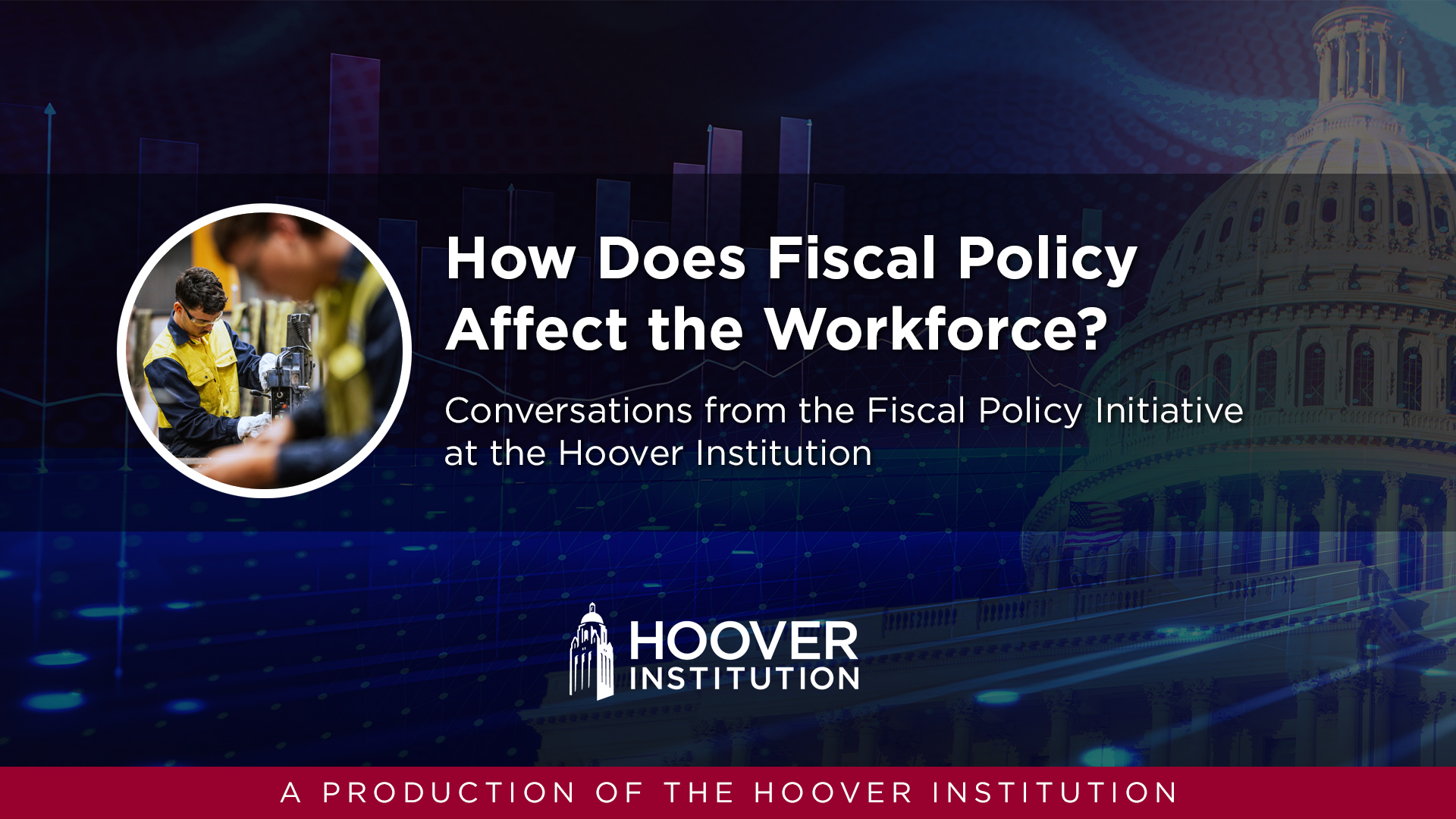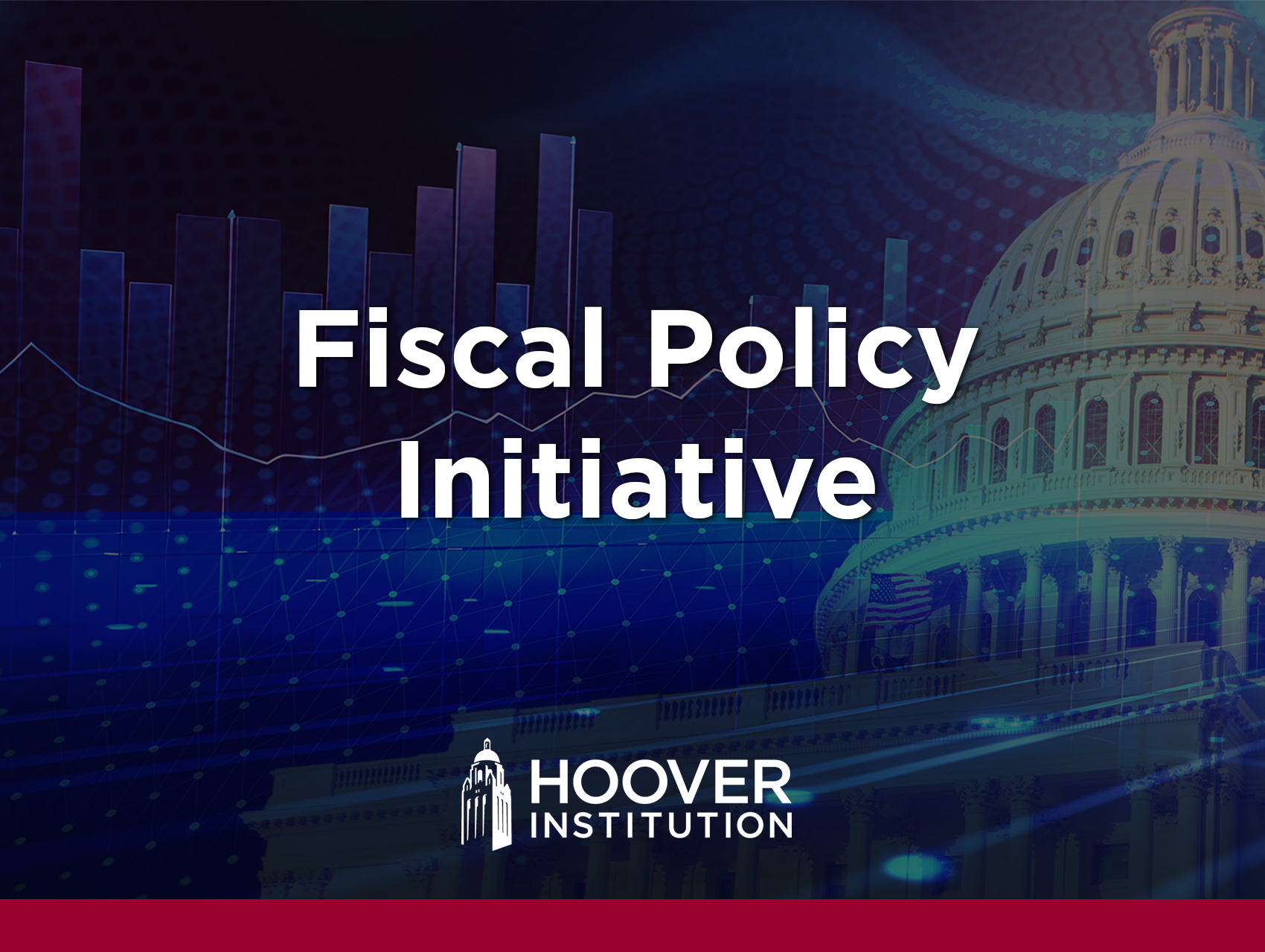- Answering Challenges to Advanced Economies
Fiscal policy affects labor force participation through spending policies and taxation, with safety net programs potentially discouraging work when combined with other assistance. Tax policies must be carefully designed to avoid disincentivizing work, as demonstrated in the 1990s when reforming welfare and expanding the earned income tax credit led to an unprecedented increase in employment. Low-wage workers and those near retirement are most sensitive to work incentives, with their employment decisions often hinging on whether the trade-off between working income and non-working support makes employment worthwhile.
Learn more about the launch of the Hoover Institution’s Fiscal Policy Initiative.
WATCH THE VIDEO
>> Scott Winship: I'd say there are two ways that fiscal policy can affect the extent to which people work, whether they're working at all and how much they're working if they do choose to work. The first of those would be our spending policies, which, particularly if our safety net policies, can make the trade off between working and not working more on the side of not working.
Our safety net isn't lavish by any stretch of the imagination. But people can combine safety net benefits with other forms of assistance that they get from family members and friends, significant others. And depending on what the trade off is, how much you can make working and how much you can make not working, some people will choose not to work.
So if our spending policies are either too generous or they just have these incentives built into them that discourage people from taking or keeping a job, that's one way that labor force participation can be affected by fiscal policy. The other big way is through our tax policy. We have some tax benefits that are aimed at lower income workers that have those same either incentives or disincentives built into them, depending on how they're designed.
So you have to be very careful when you design those policies. More generally, higher taxes on work, regardless of what your income is, are going to discourage you to work more. So even if you're a middle class worker, maybe you're a second earner, and if taxes are too high, that might inspire you to work less or stop working completely.
That is something that's much more general than than lower income workers.
>> Bruce Meyer: There is a segment of the population that is very sensitive to work incentives. It's people with low wages, often because they're low educated. It's also people close to retirement. Those are the people who tend to respond to work incentives.
And the decision in most cases involves whether or not to work at all. So we saw back in the 1990s when we expanded the earned Income tax Credit and we reoriented our welfare system to encourage work, there was a 1 to 1.5 million person increase in employment from those changes.
That was unprecedented. The employment had been flat for many years prior to those changes. And after the changes had worked their way through the system, around 2000, there stopped being a change in employment. So it really was clearly during the years and right after when we reformed the welfare system, when we expanded tax credits that encourage work.
>> Richard Burkhauser: Most people have jobs, they're gonna stay in those jobs. But on the margin, people either when they become unemployed, will seek work, but to the degree that they're able to maintain some level of income that may affect their willingness to take a job that they think is not good enough.
So you have the reality that people are incentivized to do different things.
Featuring:
- Scott Winship, American Enterprise Institute
- Bruce Meyer, University of Chicago
- Richard Burkhauser, Cornell University


















